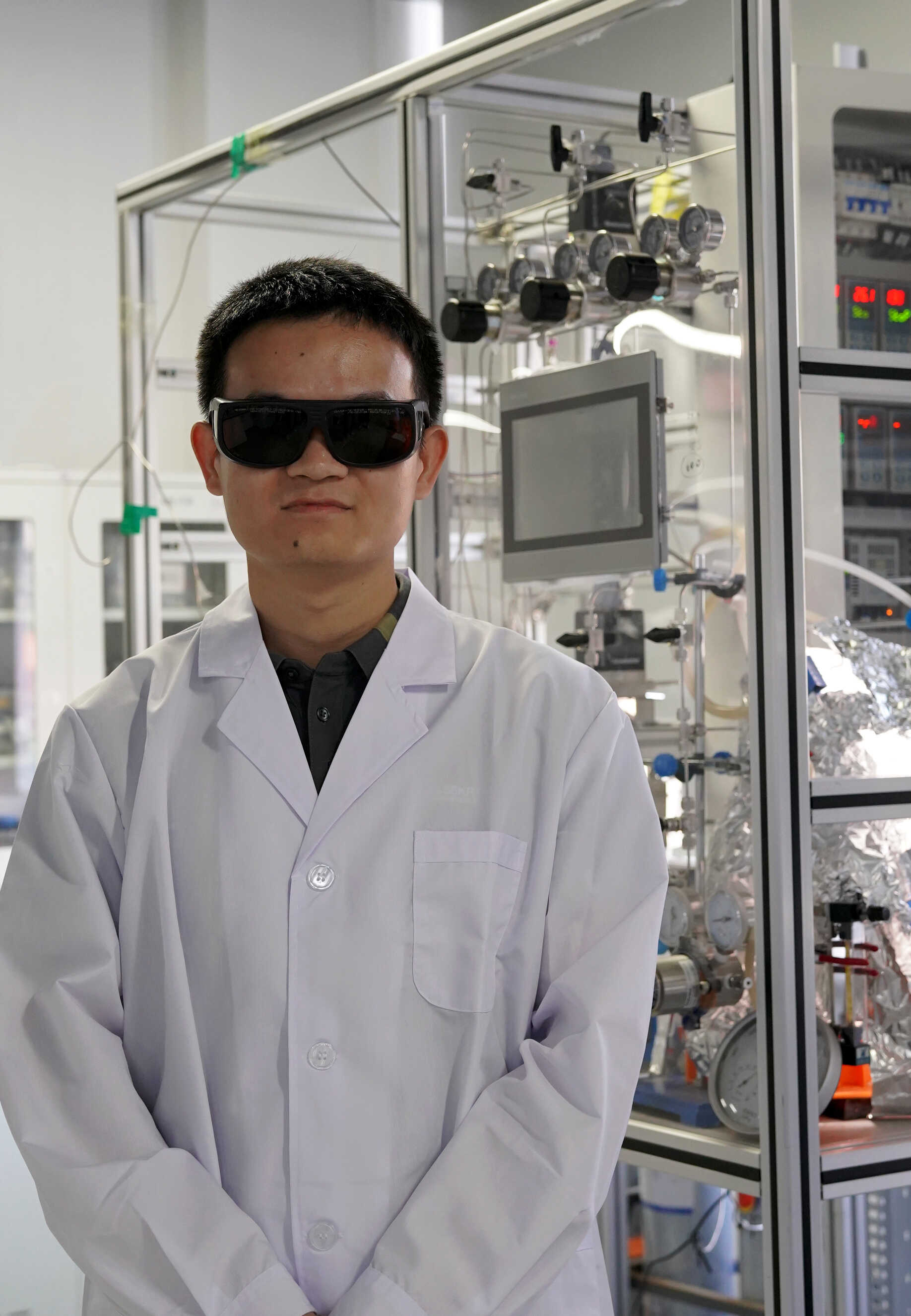
"I remember being stuck on a modeling problem for more than half a year," recalls Dr. LUO Nengchao, Associate Professor at the Dalian Institute of Chemical Physics (DICP) of the Chinese Academy of Sciences. "Then, one day, I happened to reread a paper on photocatalysis by Prof. LI Can—and it sparked a new idea. That unexpected reread became the turning point for our work."
That "turning point" led to LUO's most recent breakthrough, published in Science, in which he and his collaborators achieved heterolytic hydrogen (H2) dissociation at room temperature under light irradiation. This discovery distinguishes it from conventional pathways for heterolytic H2 dissociation, which usually require at elevated temperatures and exhibit a slow reaction rate.
LUO's work represents another paradigm. The light-triggered heterolytic dissociation mechanism is probably a fundamentally new approach. Notably, their experiments demonstrated that the H2 dissociation rate scales linearly with light intensity when the newly discovered mechanism dominates H2 dissociation, offering precise control over the reaction. Even more significantly, the process circumvents the classic trade-off between conversion efficiency and product selectivity demonstrated by CO2 reduction leveraging the heterolytic H2 dissociation, a long-standing challenge in catalysis.
The concept originated back in 2017, when LUO, then a Ph.D. student, began to question whether photogenerated charge carriers could be used as active sites or modulate the catalytic properties of an active site. He officially launched the project in 2020, but it would take another three years of fine-tuning—and intense investigation into catalyst surface defects—before the underlying mechanism became clear. The key insight came in late 2023, when LUO revisited a paper published by Prof. LI Can's team that he had previously read. What seemed at first like a familiar study suddenly illuminated the missing link in his own system's photocatalytic behavior.
LUO's research is deeply interdisciplinary and hands-on. When he joined Prof. WANG Feng's lab in 2015, he was assigned to a new project—he created a new direction from scratch. Drawing on his engineering background from Huazhong University of Science and Technology, LUO custom-built LED-based photoreactors to begin experimental studies. "From the beginning, I had to design, build, and test everything myself," LUO recalls. "But I was fortunate—DICP provided the technical platform and a team of experienced engineers to support us in implementing our ideas."
After earning his Ph.D. in 2020, LUO stayed at DICP through the institute's Excellent Young Doctoral Talents Program, securing a position as an Associate Professor. He continued pursuing photocatalysis under Prof. WANG's guidance while also stepping into a new role: mentor. One of his first graduate students, JIN Ping, served as the first author on the Science paper and played a key role in turning an idea into reality. LUO speaks of their collaboration with respect and pride. "The key is to think as partners, not just as teacher and student," he says.
The publication itself was hard-won. The manuscript was initially rejected—but with the opportunity to resubmit. Over the next eight months, the team performed a complete overhaul, expanding core datasets and redesigning key experiments. Prof. WANG's advice proved critical: "Don't just patch it up—upgrade it." That strategy paid off.
Looking ahead, LUO is determined to bridge the gap between laboratory breakthroughs and industrial-scale applications. "Photocatalysis has made tremendous scientific progress, but it hasn't yet found a foothold in practical chemical production," he explains. "Our long-term goal is to develop light-driven processes that are scalable, stable, and energy-efficient—without converting light to electricity first."
LUO is now working to improve catalyst performance and explore ways to reduce reliance on variable solar input—potentially through engineered light sources or hybrid solutions. "This direction comes with many challenges," he says, "but I believe it's worth pursuing, as I am still young."